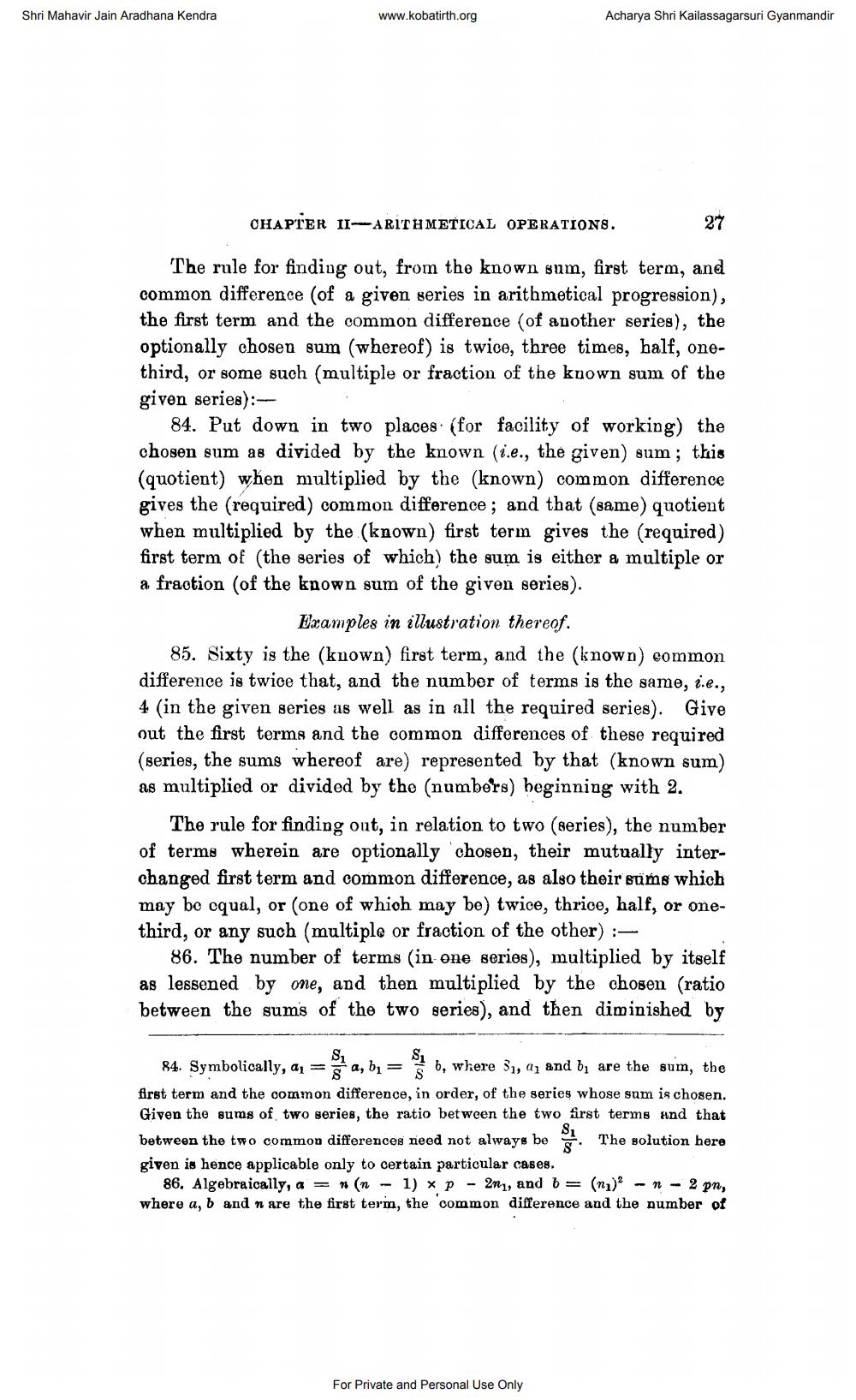________________
Shri Mahavir Jain Aradhana Kendra
www.kobatirth.org
Acharya Shri Kailassagarsuri Gyanmandir
CHAPTER II-ARITHMETICAL OPERATIONS.
27
The rule for finding out, from the known sum, first term, and common difference (of a given series in arithmetical progression), the first term and the common difference (of another series), the optionally chosen sum (whereof) is twice, three times, balf, onethird, or some such (multiple or fraction of the known sum of the given series):
84. Put down in two places (for facility of working) the chosen sum as divided by the known (i.e., the given) sum; this (quotient) when multiplied by the (known) common difference gives the (required) common difference; and that (same) quotient when multiplied by the (known) first term gives the required) first term of (the series of which the sum is either a multiple or a fraction (of the known sum of the given series).
Examples in illustration thereof. 85. Sixty is the (known) first term, and the (known) common difference is twice that, and the number of terms is the same, i.e., 4 (in the given series as well as in all the required series). Give out the first terms and the common differences of these required (series, the sums whereof are) represented by that (known sum) as multiplied or divided by the (numbers) heginning with 2.
The rule for finding out, in relation to two (series), the number of terms wherein are optionally chosen, their mutually interchanged first term and common difference, as also their stms which may be equal, or (one of which may be) twice, thrice, half, or onethird, or any such (multiple or fraction of the other) :
86. The number of terms (in one series), multiplied by itself as lessened by one, and then multiplied by the chosen (ratio between the sums of the two series), and then diminished by
84. Symbolically, aj
= b, where 31, 4, and by are the sum, the first term and the common difference, in order, of the series whose sum is chosen. Given the sums of two series, the ratio between the two first terms and that between the two common differences need not always be The solution here given is hence applicable only to certain particular cases.
86. Algebraically, a = + (n - 1) * p - 2nı, and b= (nu) -n-2 pn, where a, b and n are the first term, the common difference and the number of
For Private and Personal Use Only




